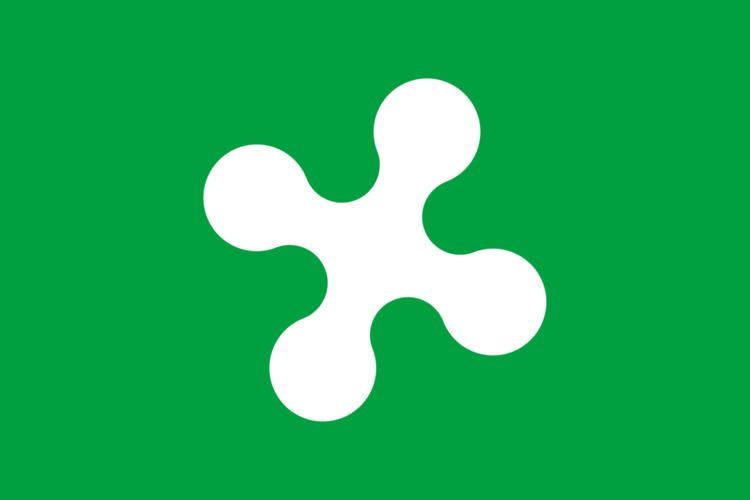 | ||
The Politics of Lombardy, Italy, takes place in a framework of a semi-presidential representative democracy, whereby the President of the Region is the head of government, and of a pluriform multi-party system. Legislative power is vested in the Regional Council of Lombardy, while executive power is exercised by the Regional Government led by the President, who is directly elected by the people. The current Statute, which regulates the functioning of the regional institutions, has been in force since 2008.
Contents
- Legislative branch
- 20132018 composition
- Executive branch
- List of Presidents
- Provinces
- Municipalities
- Latest regional election
- References
Prior to the rise of Fascism, most of the deputies elected in Lombardy were part of the liberal establishment (see Historical Right, Historical Left and Liberals), which governed Italy for decades. Lombardy was also the birthplace of the Italian Labour Party, forerunner of the Italian Socialist Party, and its eastern and northern provinces were an early stronghold of the Italian People's Party. In the 1924 general election, which led Italy to dictatorship, Lombardy was one of the few regions, along with Veneto and Piedmont, which did not return an absolute majority to the National Fascist Party. After World War II Lombardy became a stronghold of the Christian Democracy, since the 1980s in association with the Italian Socialist Party, which was especially strong in Milan.
Traditionally, Lombardy gives centrist results during elections, reflecting its strong middle class. The Communists and their successors (the Democratic Party of the Left, the Democrats of the Left and the present-day Democratic Party) never won in the region. In the 1980s Lombardy saw the organization of a new regionalist party, Lega Lombarda (later Lega Nord), that would play a major role in Italian politics since the early 1990s. Lombardy is now a stronghold of the "centre-right coalition" between Lega Nord and The People of Freedom (PdL), founded by Lombard entrepreneur Silvio Berlusconi. The coalition, which was joined by Lega Nord in 2000, has governed the region since 1995, under two Presidents, Roberto Formigoni (CDU/FI/PdL) and Roberto Maroni (Lega Nord).
Legislative branch
The Regional Council of Lombardy is composed of 80 members. 64 councillors are elected in provincial constituencies by proportional representation using the largest remainder method with a Droop quota and open lists, while 16 councillors (elected in a general ticket) come from a "regional list", including the President-elect. One seat is reserved for the candidate who comes second. If a coalition wins more than 50% of the total seats in the Council with PR, as happened during the 2000 election, only 8 candidates from the regional list will be chosen and the number of those elected in provincial constituencies will be 72. If the winning coalition receives less than 50% of votes, as happened during the 1995 election, special seats are added to the Council to ensure a large majority for the President's coalition.
The Council is elected for a five-year term, but, if the President suffers a vote of no confidence, resigns or dies, under the simul stabunt, simul cadent clause introduced in 1999 (literally they will stand together or they will fall together), also the Council is dissolved and a snap election is called.
2013–2018 composition
Source: Regional Council of Lombardy
Executive branch
The Regional Cabinet (Giunta Regionale) is presided by the President of the Region (Presidente della Regione), who is elected for a five-year term, and is currently composed by 16 members: the President and 15 regional assessors (Assessori, literally "aldermen"), including a Vice President (Vice Presidente), while 4 under-secretaries (Sottosegretari) help the President but have not right of vote when the cabinet meets.
List of Presidents
The current President of Lombardy is Roberto Maroni, who is serving for his first term after winning the 2013 regional election.
Provinces
Lombardy is divided in twelve provinces, which are a traditional form of local administration in the region, the first ones being yet established under Habsburg rule by Maria Theresa of Austria in the 18th century. Socialist and Christian-democratic ideas had an early diffusion in quite all the provinces around World War I. After the Fascist parenthesis, left-wing parties found their strongholds in south-eastern agricultural provinces near Emilia, especially in the Province of Mantua, while Christian Democracy obtained high scores in the northern mountainous part of the Region, where nowadays Lega Lombarda–Lega Nord gets a strong backing. The city of Milan is one of major national strongholds of The People of Freedom, although in the latest municipal election the left-wing prevailed.
After the 2014 reform of local authorities the Province of Milan was replaced by the new Metropolitan City of Milan. Since 2014 the president of the province is no more elected directly by citizens, but is chosen by mayors and councilors of the municipalities of the province.
Municipalities
Lombardy is also divided in 1,546 comuni (municipalities), which have even more history, having been established in the Middle Ages when they were the main places of government. 24 comuni have more than 40,000 inhabitants, most of which are ruled by the centre-left.
Latest regional election
In the latest regional election, which took place on 24–25 February 2013, Roberto Maroni of Lega Lombarda–Lega Nord was elected President of Lombardy with the support of The People of Freedom. The election was the first snap election in Lombard political history and the first one paired with a senatorial election.
Source: Region Lombardy
